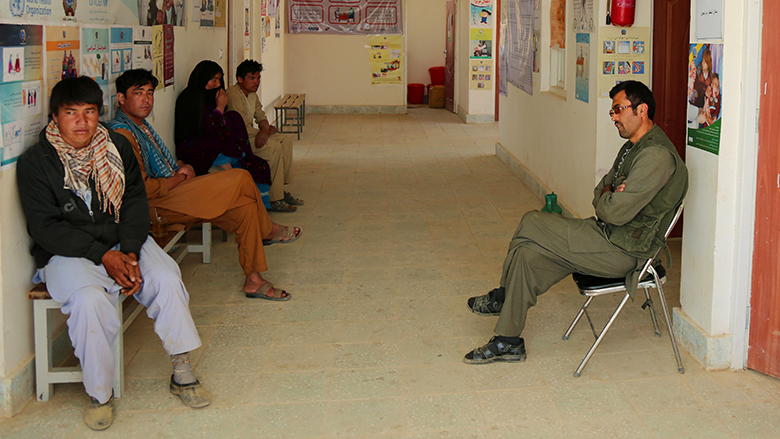NILI DISTRICT, Daykundi Province – Malika, 40, sits on the chair beside the doctor, describing a problem she’s been having with her lungs. Her breaths are labored and she speaks slowly. It is early morning and the Shish Basic Health Center (BHC) is still quiet, the corridor empty.
Today, Malika has walked two hours to reach the health center. The doctor writes her a prescription and advises her to exercise every day and to eat fruit and vegetables. “I have had a problem with my lungs for two years,” says Malika, a resident of Jan Mohammad village. “The quality of medicine that I receive from this health center is much better than other medicines that are sold in pharmacies in the market.”
As there are widespread quality control problems with domestically produced pharmaceutical drugs in Afghanistan, the health center imports medicines from the Netherlands to ensure patients have access to high quality prescription drugs.
The whitewashed health center is the only concrete building in Shish village, which lies in Nili district in Daykundi in central Afghanistan. It was founded in 2006 and operates with a staff of seven, including nurse, midwife, vaccinators, cleaner, and guard, from 8 am to 4 pm daily. Shish BHC covers an area of nearly 20,000 people, most of whom earn their income through agriculture.
Health services at Shish BHC is provided by Première Urgence-Aide Médicale Internationale (PU-AMI), a French nongovernmental organization (NGO), which has been contracted by the Ministry of Public Heath (MoPH). The contract is one of several performance-based partnership agreements between MoPH and NGOs to deliver a defined packages of basic health services and essential hospital services under the ministry’s System Enhancement for Health Action in Transition (SEHAT) Program. The provision of services by NGOs is monitored through the regular health management information system, and a third party.
SEHAT aims to expand the scope, quality, and coverage of health services provided to the population, particularly for the poor. It is supported by the International Development Association (IDA), the World Bank Group’s fund for the poorest countries, and the Afghanistan Reconstruction Trust Fund (ARTF), in partnership with multiple donors.

